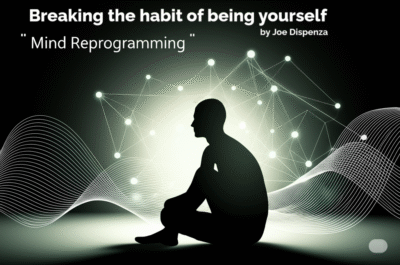Reading daily serves as a powerful catalyst for enhancing cognitive function, bolstering memory retention, expanding vocabulary, and fostering emotional resilience. By engaging in just 30 minutes of reading each day, individuals can slow age-related memory decline by up to 32%, improve focus spans, and build neural connections that persist for days after the reading session. Furthermore, renowned figures such as Warren Buffett and Bill Gates attribute their success to rigorous daily reading habits—Buffett dedicates 5–6 hours per day to reading financial reports and biographies, viewing knowledge as “compound interest”.
while Gates averages 50 books annually, focusing on non-fiction to stay abreast of global trends and innovations. Scientific studies corroborate these practices: a longitudinal Taiwanese study found that older adults reading at least twice a week reduced their risk of cognitive decline over 14 years by 46% compared to less frequent readers. Altogether, daily reading emerges not only as a leisure activity but as a structured brain workout that benefits learners, professionals, and lifelong self-improvers alike.
Table of contents
Daily reading goes beyond passive engagement; it exercises multiple cognitive domains simultaneously, strengthening neural networks and fostering mental agility. This article examines when and how to integrate reading into your routine, highlights examples from luminaries who credit reading for their success, and offers practical, step-by-step guidance to maximize the benefits of every page turned.
1. Why Is Daily Reading Vital for Cognitive Health?
1.1 How Does Reading Strengthen Neural Connections?
Reading is akin to a full-brain workout: when you decode text, your brain engages visual processing, language comprehension, memory retrieval, and imagination all at once. Neuroimaging studies reveal that narrative reading enhances connectivity in the left temporal cortex, an area responsible for language reception, and these strengthened pathways can last for days after a single session. Moreover, reading out loud amplifies this effect by stimulating auditory regions alongside visual ones, offering a dual-modal challenge that further cements neural links.
1.2 What Do Long-Term Studies Show?
Longitudinal research provides compelling evidence that habitual reading guards against age-related decline. A Taiwanese cohort study tracked participants over 14 years, finding that those reading at least once weekly experienced an adjusted odds ratio (AOR) of 0.54 for cognitive decline—essentially a 46% lower risk compared to infrequent readers. Parallel findings from the Rush Alzheimer’s Disease Center indicate that consistent reading slows memory loss and fosters “cognitive reserve,” enabling the brain to better withstand pathological changes.
2. When Should You Read for Maximum Impact?
2.1 What Time of Day Optimizes Brain Stimulation?
Although any reading session benefits the brain, evidence suggests morning and evening routines yield distinct advantages:
- Morning Reading: Stimulates alertness after sleep inertia, primes your mind for analytical tasks at work or school, and kick-starts creative thinking for problem-solving throughout the day.
- Bedtime Reading: Encourages relaxation, reduces cortisol levels, and promotes deeper sleep by avoiding blue-light screens—studies show that reading for 6 minutes can lower stress by up to 68%, outperforming listening to music or taking a warm bath.
2.2 How Much Should You Read Daily?
Experts recommend a minimum of 30 minutes per day to observe measurable gains in focus and vocabulary acquisition. For accelerated benefits—such as compound knowledge akin to interest—heavy readers like Warren Buffett advise reading 500 pages weekly, roughly 70 pages per day, dedicating 5–6 hours daily to reading foundational texts and current reports. Beginners can start with 10–20 minutes, gradually increasing duration as comprehension and interest grow.
3. Who Champions Daily Reading—and How?
3.1 How Does Warren Buffett Leverage Reading?
Warren Buffett spends roughly 5–6 hours each day reading newspapers, annual reports, and books, amounting to about 80% of his working hours.
He begins with multiple daily papers (e.g., The Wall Street Journal, Financial Times, Omaha World-Herald) to stay abreast of global events, then dives into 10-K reports and deep industry analyses, believing this breadth fuels his ability to spot long-term investment value.
Buffett likens the accumulation of knowledge to “compound interest”—the more you read, the more your understanding multiplies, enabling better decision-making and risk assessment.
3.2 What Can We Learn from Bill Gates?
Bill Gates blocks out 90 minutes every morning and evening strictly for reading, resulting in roughly 50 books completed each year—about one per week.
He prefers physical books to annotate margins, carrying a tote of 10–15 titles that include non-fiction, biographies, and sometimes fiction, to challenge different modes of thinking.
Gates curates his list based on recommendations from experts, family, and his own curiosity, then shares reviews on Gates Notes—modeling how reflecting publicly deepens comprehension and accountability.
3.3 How Did Mark Zuckerberg’s Book Club Inspire Millions?
In January 2015, Zuckerberg launched “A Year of Books,” pledging to read a new selection every two weeks, with each pick chosen to explore new cultures, histories, and ideas.
His personal challenge galvanized over 30 million Facebook followers, illustrating how public commitments and group discussions can sustain motivation and expose readers to diverse perspectives.
Zuckerberg’s approach underscores the power of peer learning: posting prompts, hosting Q&A sessions, and encouraging fans to discuss insights in dedicated groups.
3.4 What About Elon Musk’s Self-Taught Mastery?
Elon Musk famously asserts, “If you can read a lot of books and talk to people, you can learn almost anything.” He credits his mastery of rocket science and electric-vehicle engineering to devouring textbooks, research papers, and classic novels, sometimes at a pace of 60 books per month.
As a child, Musk taught himself programming from the VIC-20 manual at age 10, and later tackled aerospace engineering by reading technical manuals and peer-reviewed papers well beyond undergraduate level.
His habit of cross-disciplinary reading—mixing science fiction, philosophy, and technical treatises—demonstrates how varied inputs spark innovation and lateral thinking.
4. How Can You Build Your Own Daily-Reading Powerhouse?
4.1 When and Where to Read
- Time-Block: Reserve 30–90 minutes each morning and/or evening—mirror Gates’s routine—to create consistent habit anchors.
- Environment: Choose a quiet, comfortable spot free of screens; reading on paper reduces digital fatigue and improves retention.
4.2 What to Read and How to Read It
- Mix Genres: Balance non-fiction (to build expertise) with fiction (to enhance empathy and creativity).
- Active Note-Taking: Annotate margins, summarize key points after each chapter, and record questions for follow-up.
- Smart Selection: Use recommendations from trusted figures (e.g., Buffett, Gates’s Factfulness pick) to prioritize high-impact titles.
4.3 How to Stay Accountable
- Public Commitment: Share reading goals with friends or on social media; consider starting a mini book-club like Zuckerberg’s to foster discussion.
- Track Progress: Use apps like Goodreads or a simple spreadsheet to log completed books, page counts, and reflections.
4.4 How to Maximize Retention and Application
- Teach Others: Explain concepts to peers or via a blog—teaching solidifies learning.
- Implement Insights: After reading a management book, apply one new strategy at work; after a neuroscience article, integrate a focused reading technique into your study routine.
- Review Regularly: Revisit your notes monthly; spaced repetition prevents forgetting and uncovers deeper insights.
5. What Are the Core Reading Tactics?
5.1 How Do You Schedule Your Reading?
- Time-Blocking: Reserve consistent blocks (e.g., 30–90 minutes) each day to read, as dedicated slots prime your brain for deep focus and reduce decision fatigue about when to read.
- Themed Sessions: Assign specific genres or purposes to different blocks—mornings for technical or work-related reading, evenings for fiction or reflection—to optimize mental states and reinforce habit cues.
5.2 How Do You Engage Actively with Text?
- Annotation & Notetaking: Mark key passages, write margin notes, and summarize chapters to increase comprehension and retention; collaborative annotations further boost engagement in group settings.
- Question-Driven Reading: Before each session, list 2–3 questions you wish to answer from the text, guiding your attention and fostering critical thinking.
5.3 How Do You Maintain Accountability?
- Public Commitment: Share goals on social media, a blog, or with friends—mirroring book club models—to harness social motivation and peer support.
- Progress Tracking: Use habit-tracker apps or a simple spreadsheet to log minutes read, pages completed, and notes taken; visual feedback sustains momentum over weeks and months.
5.4 Why Diversify Your Reading Diet?
- Genre Variety: Alternate between non-fiction for expertise, fiction for empathy and creativity, and technical articles for problem-solving; genre mixing engages different neural pathways.
- Cross-Disciplinary Exposure: Integrate biographies, history, science, and philosophy to spark innovative connections and broaden thinking.
5.5 How Do You Optimize Your Environment?
- Quiet, Screen-Free Zones: Choose a low-noise space without digital distractions; silence reduces cognitive load and enhances focus, while blue-light avoidance improves sleep if reading before bed.
- Comfort & Ergonomics: Ensure proper lighting and seating to prevent physical discomfort that can interrupt concentration.
5.6 How Do You Cement Learning for the Long Term?
- Spaced Repetition: Review your annotated notes at increasing intervals (e.g., 1 day, 1 week, 1 month) to leverage the spacing effect and reinforce memory traces.
- Teaching & Application: Explain concepts to peers or apply one new idea in your work or studies soon after reading, which deepens understanding and transforms knowledge into skill.
6. Summary Table of Tactics and Outcomes
| Tactic | Description | Expected Outcome | Daily Time |
|---|---|---|---|
| Time-Blocking | Schedule fixed reading slots to build routine and reduce decision fatigue. | Enhanced deep focus and consistency. | 30–90 minutes |
| Themed Sessions | Assign specific reading goals or genres to different time blocks. | Optimized mental states and diverse brain stimulation. | Included above |
| Annotation & Notetaking | Actively mark text and write summaries in margins. | Improved comprehension and retention. | Concurrent with reading |
| Question-Driven Reading | Formulate pre-reading questions to guide attention. | Heightened critical engagement and targeted learning. | 2–3 minutes preparation |
| Public Commitment | Share reading goals and progress with a community. | Increased motivation through social accountability. | N/A |
| Progress Tracking | Log reading metrics (pages, minutes, notes) in an app or spreadsheet. | Sustained habit formation via visual feedback. | 1–2 minutes logging |
| Genre Variety | Rotate non-fiction, fiction, and technical materials. | Broadened creativity, empathy, and domain knowledge. | As scheduled |
| Quiet Environment | Read in a distraction-free, well-lit space without screens. | Enhanced concentration; better sleep if pre-bed reading. | Environment setup only |
| Spaced Repetition | Review notes at spaced intervals post-reading. | Stronger long-term memory retention. | 5–10 minutes per review |
| Teaching & Application | Explain key takeaways to others and apply insights in real scenarios. | Deeper understanding and skill-based application. | Variable |
By following this hierarchical outline and referring to the summary table, you can implement a robust daily reading system—one that leverages proven cognitive principles and real-world best practices to achieve lasting gains in knowledge, creativity, and mental resilience.
References
- PubMed Central: Reading activity prevents long-term decline in cognitive function in older people: evidence from a 14-year longitudinal study
Yu-Hung Chang et al., Jan 2021 PubMed - ScienceDirect: Cognitive stimulation and cognitive results in older adults: review
[Authors], Feb 2022 ScienceDirect - ResearchGate: The Outcomes of Cognitive Stimulation Therapy (CST) for Community-Dwelling Older Adults With Cognitive Decline in Taiwan
[Authors], Oct 2024 ResearchGate - Forbes: The One Investment Warren Buffett Says Will Change Your Life (And It’s Not a Stock)
Carmine Gallo, Nov 30 2017 Forbes - Business Insider: Inside the daily routine of 87-year-old Warren Buffett, who loves McDonald’s, spends 80% of his workday reading, and unwinds by playing the ukulele
Áine Cain, Sep 1 2017 Business Insider - Time: The Reading Habits of Ultra-Successful People
Time Staff, Jun 2015 Time - The Guardian: Mark Zuckerberg declares 2015 the “Year of Books” with online book club
Samuel Gibbs, Jan 7 2015 The Guardian - Wired: Mark Zuckerberg’s New Year’s Resolution: Start a Worldwide Book Club
Wired Staff, Jan 2015 WIRED - Gates Notes: Books to keep you warm this holiday season
Bill Gates, Dec 3 2024 gatesnotes.com - Gates Notes: 5 great things to read or watch this summer
Bill Gates, May 22 2024 gatesnotes.com - Medium (Mind Cafe): How Twitter CEO Elon Musk Reads 100+ Books A Year
Mind Cafe, Jun 2023 Medium - Medium: Elon Musk’s Reading Method: Learn Almost Anything Through Massive Reading
Gabrielle Luk, Feb 2025 Medium
















